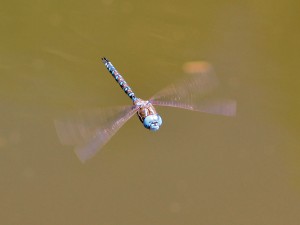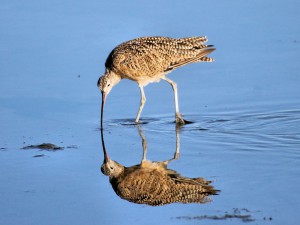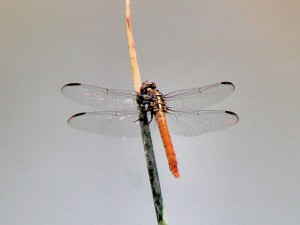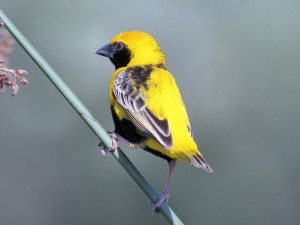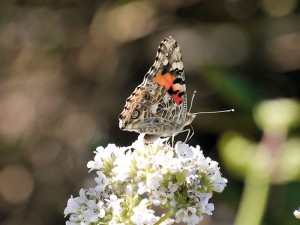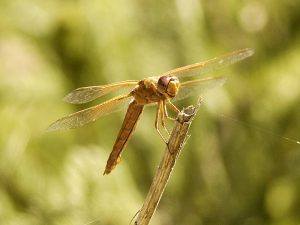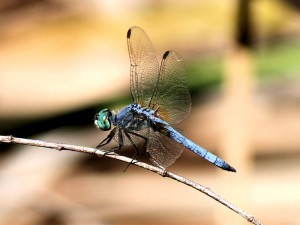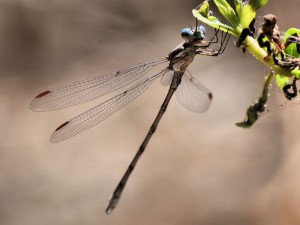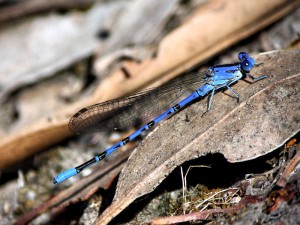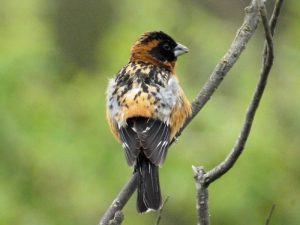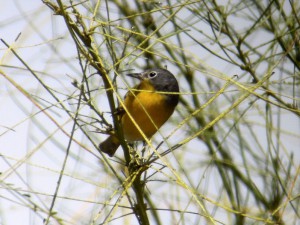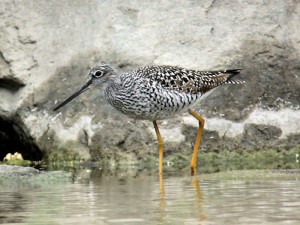Blue-eyed Darners (Rhionaeschna multicolor) are common throughout California. This dragonfly is a mosaic darner. This mosaic darner family contains at least 10 species, all of relatively similar size and coloration. Hence, mosaic darners are often quite hard to tell apart. The family gets its name from the beautiful pattern of coloration on the abdominal segments. The broad distribution of Blue-eyed Darners extends from central Canada south, across most of the United States and all the way down to Panama in Central America. Furthermore, the completely blue eyes and absence of a black line dividing the face distinguish Blue-eyed Darner from all other members of the family. They also differ in the shape of the abdominal appendages. Continue reading
Category Archives: Spotting Scopes
Long-billed Curlew
The Long-billed Curlew (Numenius americanus) bears several distinctions among North American shorebirds. In addition to being the largest common sandpiper on the continent, it is also the one with the largest bill. The bill size of the Long-billed Curlew is quite variable, with females generally having notably longer bills than males. The two genders have different shaped bills as well. Male Long-billed Curlew bills show nearly continuous curvature along its length. But the female’s overall flatter bill terminates in a sharply hooked tip. Note how this bird’s lower mandible is distinctly shorter than the upper, falling short of the often sharply curved tip.
Finding Long-billed Curlew in SoCal
Long-billed Curlews are common wintering birds in southern California, gathering in huge numbers on the agricultural fields of Imperial County, and in smaller numbers at Bolsa Chica Preserve and Upper Newport Bay here in Orange County. A certain small number of Long-billed Curlews do not migrate north to their breeding grounds each year, meaning there are some individuals present year round at locations like Bolsa Chica. Continue reading
Salton Sea Dragonflies
We took a trip to look for Salton Sea dragonflies and birds during the first week of August. Stop and think about that: the Salton Sea in August! Are we nuts?! Probably, but there are some things you can only find there in the summer, and the Salton Sea seems to always be good for odes (dragonflies and damselflies).
Mindful of the fact that it can easily top out over 120°F there in the summer, we took a lot of sunscreen and water, started well before dawn, and planned on leaving early. By 7:30 it was unpleasantly hot; by 8:30 it was sweltering. But we were finding birds and bugs so it was all good. We had the company of our good friend, Bob Miller, a local birding and odes expert who lives in Brawley, and who knows where to find everything worth seeing in terms of local wildlife at the Salton Sea. Continue reading
Yellow-crowned Bishops
A male Yellow-crowned Bishop (Euplectes afer) recently made news in Orange County. Part of what makes this unusual is that Yellow-crowned Bishop isn’t a wild bird. It undoubtedly is a released or escaped cage bird. Originally, Yellow-crowned Bishops come from Africa, and inhabit nearly every sub-Saharan country. So what’s all the fuss about? Well, for starters, he’s a cracking bird!
Where to Find Him
Moreover, this bird is just fun to watch! Present in San Diego Creek just upstream of Audubon House at San Joaquin Wildlife Sanctuary, this Yellow-crowned Bishop is very territorial. He perches high in clusters of sedge and aggressively chases virtually anything that comes near – Scaly-breasted Munias, Common Yellowthroats, House Finches… whatever! He doesn’t just chase them though; he puts on a show! First he puffs his feathers up and half opens his wings, about doubling in size. Then he launches at the intruders with rapid shallow wing beats looking like an angry little quail in hot pursuit. All the time, he utters a high-pitched, metallic, plinking call. His turf protected, he returns to his previous perch high in the sedge.
Almost any exotic escaped cage bird can become established in the southern United States. People who said the Pin-tailed Whydah would never become established in California are looking a bit foolish right now! You just never know. Continue reading
Getting Close to Bugs
The old saying goes “Close only counts in horseshoes and hand grenades.” But we who study butterflies, dragonflies, or other small creatures, know that many other things need proximity. Getting close looks at and/or photographing them requires optics that let you see these beauties in enough detail. That means being able to focus at very short distances. On the Optics4Birding website, a binocular’s close focus distance must be less than 8 feet to be considered close-focusing. I photographed these butterflies with a lens that allows close focus as well. All these images are full frame. I have not cropped the photos, only resized them to fit our page format. The Painted Lady (above) was feeding on nectar from these flowers. Continue reading
Wildlife Photography is Full of Surprises
To paraphrase Forest Gump’s mother, wildlife photography, especially video, is like a box of chocolates – you never know what you’re going to get. Animals do things on their own volition, so it always pays to wait and watch.
After looking at shorebirds along the Los Angeles River last fall, we walked back to the car through a park along the river. It was late morning and butterflies and dragonflies were quite active. Although we are primarily birders, we are interested in all of nature. So, we stopped to see what we could find.
Dragonfly Feeding Behavior
Dragonflies have two main methods of getting food: hawking and patrolling. In hawking, the dragonfly perches on the end of a branch, stump, or rock and waits for its prey to come flying by. In patrolling, the dragonfly flies up and down an area, often a path or road, and searches out its prey. Patrolling dragonflies are notoriously difficult to photograph because they are hardly ever stationary.
The Wildlife Photography Surprise
As we walked along, I noticed a Flame Skimmer. It was sitting perched on a stick in the middle of a planted area. Fortunately, Flame Skimmers are hawking dragonflies, so I decided to digiscope some video through my Kowa TSN-884 spotting scope with my micro four thirds camera. I set up, zoomed in, and started recording, waiting for something interesting to happen. The first few times the skimmer flew off its perch, I stopped recording, but it kept returning. Interested in showing that behavior, I started a new clip and decided to let the video run until it came back. Was I ever surprised and happy.

Letting the video run really paid off. When the Flame Skimmer returned to its perch, it was chewing away on a gnat! I never expected that. What a surprise! Isn’t wildlife photography fun?
Blood Moon in Southern California

The moon becomes very reddish in color as the total eclipse progresses. Light refracted from our atmosphere dimly lights the “blood moon”.
The first of four total eclipses of the moon was visible late in the evening of April 14, 2014. A blood moon is another name for a total lunar eclipse. The refracted light as it passes through our atmosphere is the only light that hits the moon. In essence, this has the effect of casting a red sunset onto the moon. Going forward, one of the remaining three total eclipses of the moon will occur each 6 months. This frequency of total eclipses has not occurred in over three hundred years. This is a pleasurable and easy event to enjoy with binoculars.
The events are also unique for multiple other reasons. The first reason is because all four eclipses will be visible from somewhere in North America. This first eclipse had the added attraction of also being on the same night as the closest approach of Mars to the earth since 2008. Just below the red planet was the blood moon. A celestial event that will not happen again in our lifetimes. Continue reading
Dragon and Damselflies Up Close and Personal
Lately, we’ve been digiscoping insects while field-testing the Swarovski ATX/STX modular spotting scopes. One of the stand-out features of these scopes is their superb digiscoping capabilities. The scope’s 65-mm objective module close-focuses to 6-feet, meaning it works almost like a macro lens. We played with the scope to see how it would perform taking pictures of dragon- and damselflies. All these odes inhabited a quiet little stream less than a mile from our store!
Blue Dasher
This is a male Blue Dasher, Pachydiplax longipennis, a common dragonfly of southern California. Note the blue abdomen, sea-green eyes and white facial plate, and subtle amber patch on the hind wings. Females are browner on the thorax and abdomen, with cream markings for accent, but they still have the green eyes and white facial plate. Territorial males frequently chase each other around. We commonly find Blue Dashers, members of the skimmer family, over rivers, ponds and streams. They tend to hunt from perches, which means they?re often stationary, making them much easier to photograph!
California Spreadwing
This blue-eyed beauty is a male California Spreadwing damselfly, Archilestes californica. Spreadwings are unusual among damselflies in that they often perch with the wings wide open. The California Spreadwing is told from the Great Spreadwing by the white markings on the thorax flanks, and the two-toned pterostigma. Like the Blue Dasher, this spreadwing is a sally hunter. That means it hawks prey from a perch to which it often returns. To photograph them, we focused on the perch and waited for the hunter to return.
Vivid Dancer
Lastly, here’s a brilliant blue male Vivid Dancer damselfly, Argia vivida. Distinguish these gorgeous little damselflies from other similar species by the carrot-shaped black marks on the abdominal segments. This species occurs in every single county in California, making it our most common one. When Vivid Dancers emerge from their nymph forms, a pale gray pruinescence coats them. That wears off with time to reveal their brilliant color. Vivid Dancers often perch away from water, on rocks, logs and shrubs, as these were doing when we found them.
All these pictures were taken with the Swarovski ATX-65 spotting scope, equipped with the TLS-APO digiscoping adaptor, using a Canon 40D camera.
Black-headed Grosbeak: Swarovski ATX 85
Aliso and Wood Canyons Regional Park in Laguna Niguel, California is a wonderful place to go in the spring. Summer resident breeding birds are often perched up and singing. The habitat is a combination of coastal sage scrub with willow and cottonwood riparian areas. A road parallels the creek that runs down the center of the canyon. Late March and early April is the perfect time to visit, because you can see and hear Greater Roadrunner, Least Bell’s Vireo, Yellow Warbler, Yellow-breasted Chat, Blue Grosbeak, and Black-headed Grosbeak. Therefore, I headed there to try digiscoping with my micro 4/3 format camera through the Swarovski ATX Modular Eyepiece with the Swarovski 85mm Modular Objective. The Chats weren’t in yet. I saw one Blue Grosbeak but it was high in a willow against marine layer clouds – a difficult background to work with.
Digiscoped Video

As luck would have it, I found this Black-headed Grosbeak Pheucticus melanocephalus posted up and singing. The bird sat low enough that there was foliage in the background. The Grosbeak was so vivid and sang beautifully. Therefore, I immediately decided to take a video. Fortunately, it was easy to mount the camera to the scope, thanks to the Swarovski TLS-APO SLR camera adapter, and I was rolling seconds after I had focused on the Black-headed Grosbeak with the ATX 85 spotting scope.
The pale downy feathers are the Grosbeak’s insulation system. He was fluffed-up because the chill from the previous night had not yet left the air.
Digiscoping with the Swarovski ATX-85 Scope
We recently got the new Swarovski ATX-85 spotting scope in for evaluation and have really enjoying digiscoping birds with it. In addition to the crystal clear, tack sharp image quality, this scope also has a really well-designed digiscoping options for point-and-shoot cameras as well as micro 4/3 and standard DSLR cameras. Below are a few modest examples.
A Salton Sea Chase
We drove to the Salton Sea, looking for the recently reported Cave Swallows. There we found a group of Nashville Warblers playing in a palo verde tree, easily 70 yards away. In this case, the distance actually helped, as it gave us a few more seconds’ time to get one of these hyper-kinetic little birds in frame for long enough to snap off a shot or two. Most of the shots didn’t work out, primarily because of obscuring branches, but this one did. Now how often do you see people digiscoping a quick bird like a Nashville Warbler?! This picture was taken with a Nikon CoolPix P 300 camera, using Swarovski’s DCB II adaptor and the Swarovski ATX-85 spotting scope.
More Local Digiscoping
We chased a potential Solitary Sandpiper along San Diego Creek in Irvine early one morning. It was a very gray, overcast morning with a heavy marine layer, so there wasn’t much light available. We dipped on the Solitary but got this very handsome Greater Yellowlegs as compensation. We pushed the ISO setting on the Nikon CoolPix to 800 to stop the motion of this actively feeding bird. Thereafter, everything came pretty easily.

